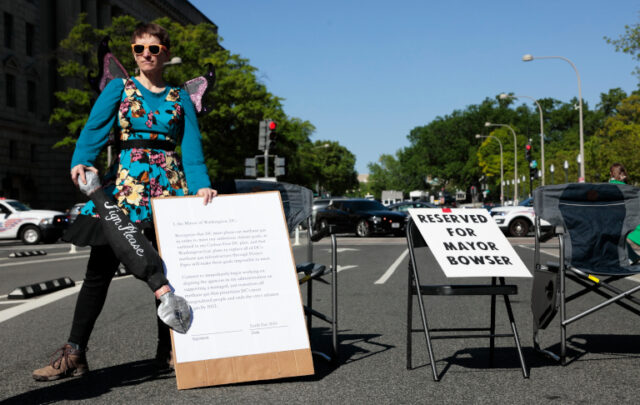Our transportation system is “magnificent, mysterious and maddening,” says the subtitle of Edward Humes’ new book. Open the cover and you’ll encounter more than a little “mayhem” too.
Is the North American economy a consumer economy or a transportation economy? The answer, of course, is “both”. Exponential growth in consumerism has gone hand in hand with exponential growth in transport, and Edward Humes’ new book provides an enlightening, entertaining, and often sobering look at several key aspects of our transportation systems.
 Much of what we consume in North America is produced at least in part on other continents. Even as manufacturing jobs have been outsourced, transportation has been an area of continuing job growth – to the point where truck driving is the single most common job in a majority of US states.
Much of what we consume in North America is produced at least in part on other continents. Even as manufacturing jobs have been outsourced, transportation has been an area of continuing job growth – to the point where truck driving is the single most common job in a majority of US states.
Manufacturing jobs come and go, but the logistics field just keeps growing—32 percent growth even during the Great Recession, while all other fields grew by a collective average of 1 percent. Some say logistics is the new manufacturing. (Door to Door, Harper Collins 2016, Kindle Edition, locus 750)
With a focus on the operations of the Ports of Los Angeles and Long Beach, Humes shows how the standardized shipping container – the “can” in shipping industry parlance – has enabled the transfer of running shoes, iPhones and toasters from low-wage manufacturing complexes in China to consumers around the world. Since 1980, Humes writes, the global container fleet’s capacity has gone from 11 millions tons to 169 million tons – a fifteen-fold increase.
While some links in the supply chain have been “rationalized” in ways that lower costs (and eliminate many jobs), other trends work in opposite directions. The growth of online shopping, for example, has resulted in mid-size delivery trucks driving into suburban cul-de-sacs to drop off single parcels.
The rise of online shopping is exacerbating the goods-movement overload, because shipping one product at a time to homes requires many more trips than delivering the same amount of goods en masse to stores. In yet another door-to-door paradox, the phenomenon of next-day and same-day delivery, while personally efficient and seductively convenient for consumers, is grossly inefficient for the transportation system at large. (Door to Door, locus 695)
Humes devotes almost no attention in this book to passenger rail, passenger airlines, or freight rail beyond the short-line rail that connects the port of Los Angeles to major trucking terminals. He does, however, provide a good snapshot of the trucking industry in general and UPS in particular.
Among the most difficult challenges faced by UPS administrators and drivers is the unpredictable snarl of traffic on roads and streets used by trucks and passenger cars alike. This traffic is not only maddening but terribly violent. “Motor killings”, to use the 1920s terminology, or “traffic accidents”, to use the contemporary euphemism, “are the leading cause of death for Americans between the ages of one and thirty-nine. They rank in the top five killers for Americans sixty-five and under ….” (locus 1514)
In the US there are 35,000 traffic fatalities a year, or one death every fifteen minutes. Humes notes that these deaths seldom feature on major newscasts – and in his own journalistic way he sets out to humanize the scale of the tragedy.
Delving into the records for one representative day during the writing of the book, Humes finds there were at least 62 fatal collisions in 27 states on Friday, February 13, 2015. He gives at least a brief description of dozens of these tragedies: who was driving, where, at what time, and who was killed or seriously injured.
Other than in collisions where alcohol is involved, Humes notes, there are seldom serious legal sanctions against drivers, even when they strike down and kill pedestrians who have the right of way. In this sense our legal system simply reflects the physical design of the motor vehicle-dominated transport system.
Drawing on the work of Strong Towns founder Charles Marohn, Humes explains that roads are typically designed for higher speeds than the posted speed limits. While theoretically this is supposed to provide a margin of safety for a driver who drifts out of line, in practice it encourages nearly all drivers to routinely exceed speed limits. The quite predictable result is that there are more collisions, and more serious injuries or death per collision, than there would be if speeding were not promoted-by-design.
In the design of cars, meanwhile, great attention has been devoted to saving drivers from the consequences of their own errors. Seat belts and air bags have saved the lives of many vehicle occupants. Yet during the same decades that such safety features have become standard, the auto industry has relentlessly promoted vehicles that are more dangerous simply because they are bigger and heavier.
A study by University of California economist Michelle J. White found that
for every crash death avoided inside an SUV or light truck, there were 4.3 additional collisions that took the lives of car occupants, pedestrians, bicyclists, or motorcyclists. The supposedly safer SUVs were, in fact, “extremely deadly,” White concluded. (Door to Door, locus 1878)
Another University of California study found that “for every additional 1,000 pounds in a vehicle’s weight, it raises the probability of a death in any other vehicle in a collision by 47 percent.” (locus 1887)
Is there a solution to the intertwined problems of gridlock, traffic deaths, respiratory-disease causing emissions and greenhouse gas emissions? Humes takes an enthusiastic leap of faith here to sing the praises of the driverless – or self-driving, if you prefer – car.
“The car that travels on its own can remedy each and every major problem facing the transportation system of systems,” Humes boldly forecasts. Deadly collisions, carbon dioxide and particulate emissions, parking lots that take so much urban real estate, the perceived need to keep adding lanes of roadway at tremendous expense, and soul-killing commutes on congested roads – Humes says these will all be in the rear-view mirror once our auto fleets have been replaced by autonomous electric vehicles.
We’ll need to wait a generation for definitive judgment on his predictions, but Humes’ description of our present transportation system is eminently readable and thought-provoking.
Top photo: container train on Canadian National line east of Toronto.






